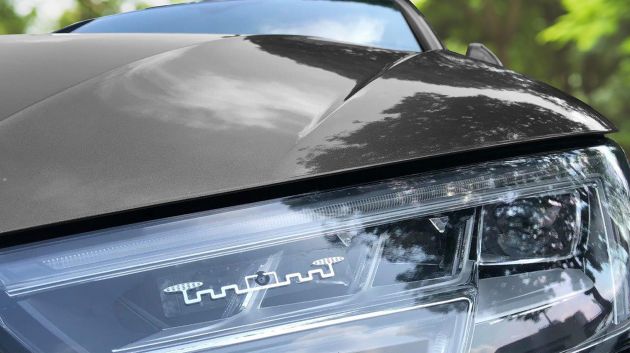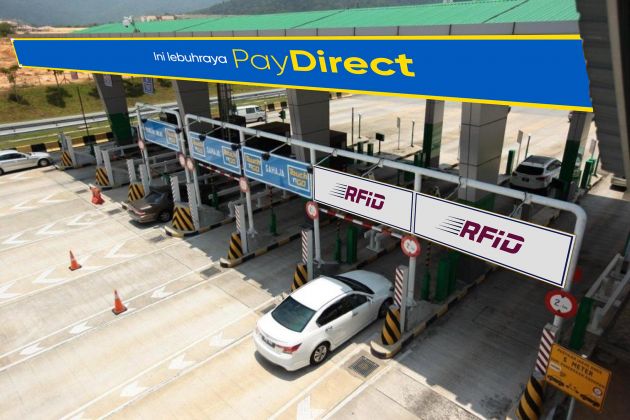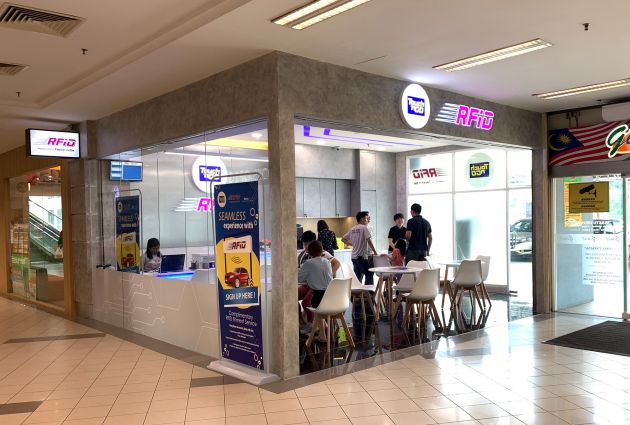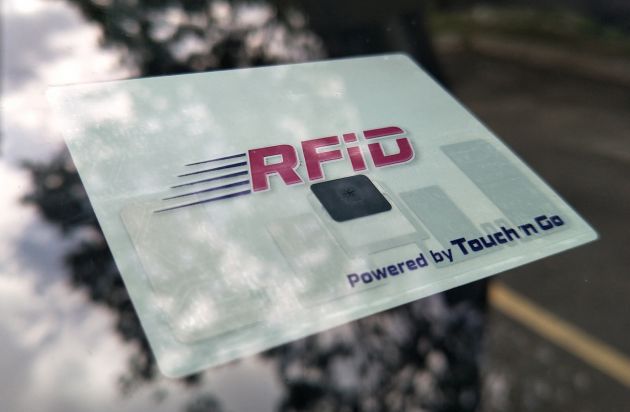Last September, Touch n Go (TnG) began the utilisation of radio-frequency identification (RFID) for electronic toll collection with the start of a public pilot programme, which has since seen a sizeable community of over 200,000 pilot testers across the Klang Valley, Johor and Penang being enabled during the initial pilot stage deployment.
Now that installation has been opened to walk-in customers supported by over 40TnG Fitment Centers, more motorists are signing up for the system, which utilises a sticker-based passive tag attached to the exterior of an individual vehicle (in most cases, placed on the headlight).
When attached, the tag – which contains electronically-stored information stored on a micro-sized chip and is uniquely identified to each vehicle – performs the same electronic payment for toll collection like physical TnG cards and the Smart Tag reader, but in more convenient hands-free form, made seamless by the TnG eWallet.
This is because, unlike a barcode being scanned by a reader at a retail shop, the RFID tag does not need to be within the line of sight of the reader as it operates on radio waves. The RFID tag will transmit the necessary info when accessed by the RFID reader, providing the information exchange in encoded fashion.
Under the current TnG RFID pilot for toll, when passing through the RFID lane, the reader will emit a signal to the RFID tag via an antenna. The tag then provides relevant information such as available balance and the toll fare is then deducted from a user’s electronic wallet (like the TnG eWallet) that is linked to the RFID tag.
Why RFID?
Well, the idea isn’t new. The tech has been in use in many industries such as production, where it can be used to manage goods and inventory, as well as data identification in travel documents such as passports and airline baggage.
In fact, most of us utilise RFID on a daily basis without realising it – aside from credit cards which you can wave to pay for purchases, the tech can be found in office access RFID cards, and season parking or housing entry passcards for vehicles are also commonly RFID-based.
Its large-scale adoption across a multitude of platform spectrums is no surprise – RFID offers good, stable signaling aspects with fast response times, and it is relatively cheap to implement, with regards to tags. Scanning range can reach long distances, though it is dependent on the system and necessity.

Active or passive RFID?
Primarily, there are two types of RFID systems, active and passive. In an active system, the tag operation is battery-assisted, and having power means that the tag can relay the signal back actively to a transmitting reader, effectively amplifying the return signal, much like how SmartTag works, although that’s an RFID-to-infrared reading system.
While an active tag enables a signal to be broadcast over longer distances than with a passive tag and with greater efficiency, the need for power means that a battery-operated RFID active system would incur a higher cost from the tag, and such a system would be subject to the same operational issues prevalent with the current SmartTag, such as battery failure, which renders the unit inoperable and the tag unreadable by the interrogator.
As such, passive RFID tags like the one employed in the TnG application are not powered, and work with an active reader on the toll gate, which sends an electromagnetic signal and reads the info off the RFID tag.
While the passive tags may not be as powerful as the active tags, the tags that are used for tolling are ETC grade sticker tags, which has the ability to be detected at high speed when used in a multi-lane free flow highway scenario.
RFID, a solution to reduce congestion at toll plazas?
In this age of advanced technology, our toll booths are in desperate need of an upgrade and this method hopes to do the same. The implementation of RFID tagged to the eWallet as another means for toll payment will enable motorists to make payment without stopping at toll plazas, and this has the potential to reduce traffic congestion and commuting time considerably.
Passive tags are available in three frequency types, low (LF), high (HF) and ultra-high (UHF), but the first two are for near-field communication purposes and don’t concern automotive applications, being used in areas such as animal identification and premise access control (LF) and smart/credit cards (HF). The passive system as seen in the TnG system is a UHF type.
As for speed, an active system allows for higher operating speeds, but again, given how our tolls are set up, there’s no need to increase that until we get to a system utilising Multi-Lane Free Flow (MLFF) gantries.
In general, a UHF tag – which operates at a frequency of between 919 to 923 MHz, depending on the particular system – features an antenna around 16 cm wide, made out of a metallic compound (aluminium, copper etc) deposited on the substrate, as exemplified by the TnG RFID passive tag used here.
The primary advantage of such UHF tags is that they are cheap to produce and easy to replace, and there’s never ever any need for a battery replacement. Cost-wise, an active RFID system would be around five times more than a passive one, and that’s something that consumers might not be willing to fork out for.
On the whole, the use of RFID in toll collection promises an improvement in on-the-road experience for road users. In addition to being hassle free, and not just from a contactless point of view, the linking of an eWallet makes it easier for motorists to monitor payments and manage reloads.
Going beyond tolls – parking a viable possibility for RFID
Beyond toll collection, other applications for RFID in the near future can very easily include parking payment. Here, the TnG RFID tag can be utilised as a digital key, in which a parking lot reader detects and reads the RFID chip and allows entry and exit from the premises, deducting the parking fee from the eWallet.
The most notable benefit of RFID in parking management is that vehicles can be permitted to enter or exit the parking facility without human intervention, enabling cashless transactions and eliminating the need for physical parking tickets. This can be achieved by a simple extension of the existing Touch n Go RFID system, which has been put to test in a “live” use case scenario over the last eight months across toll ways.
It would be interesting to see if TnG can roll out this service in the near future by working with relevant stakeholders and local authorities.
Retail play – too far-fetched or a distant reality?
There is also the possibility of RFID being used as a means of payment for retail transactions, with petrol station and drive-through retail payments being made via the UHF tag affixed to the car. Can you imagine rolling down a fast food/coffee drive-trough, and making payment through your (auto-reloaded) eWallet, seamlessly via your vehicle’s RFID chip?
Further down the road and moving away from dependability on the TnG card, off-site retail could be possible with the use of wider near-field communication (NFC) adoption in mobile phones, with payment again accomplished through the eWallet.
Can TnG and the authorities reap the benefits of RFID further for connected motorists?
Across different industries, new innovative ways to use these RFID tags are being thought up every day. As it progresses, the unique identification provided by an RFID tag also has potential to be used as a dedicated vehicle identifier, with accessible information for dealings with official matters related to the vehicle, for example, vehicle inspection as well as road tax and insurance renewal.
The recent move to implement RFID to modernise Malaysian highways by TnG and the authorities holds good potential to offer greater convenience to the motorist/consumer. The contactless aspect of RFID will make journeys more seamless, as drivers will no longer be hindered by the process of toll payments in the future.
As we journey towards more solutions to enable a cashless experience, Touch n Go should seriously consider grouping mobility payments beyond toll collection via RFID tagged to its electronic wallet – making it a single stop solution for all payments linked to a vehicle.
Find out more about RFID here.
Related Cars for Sale on
Source: Read Full Article
















